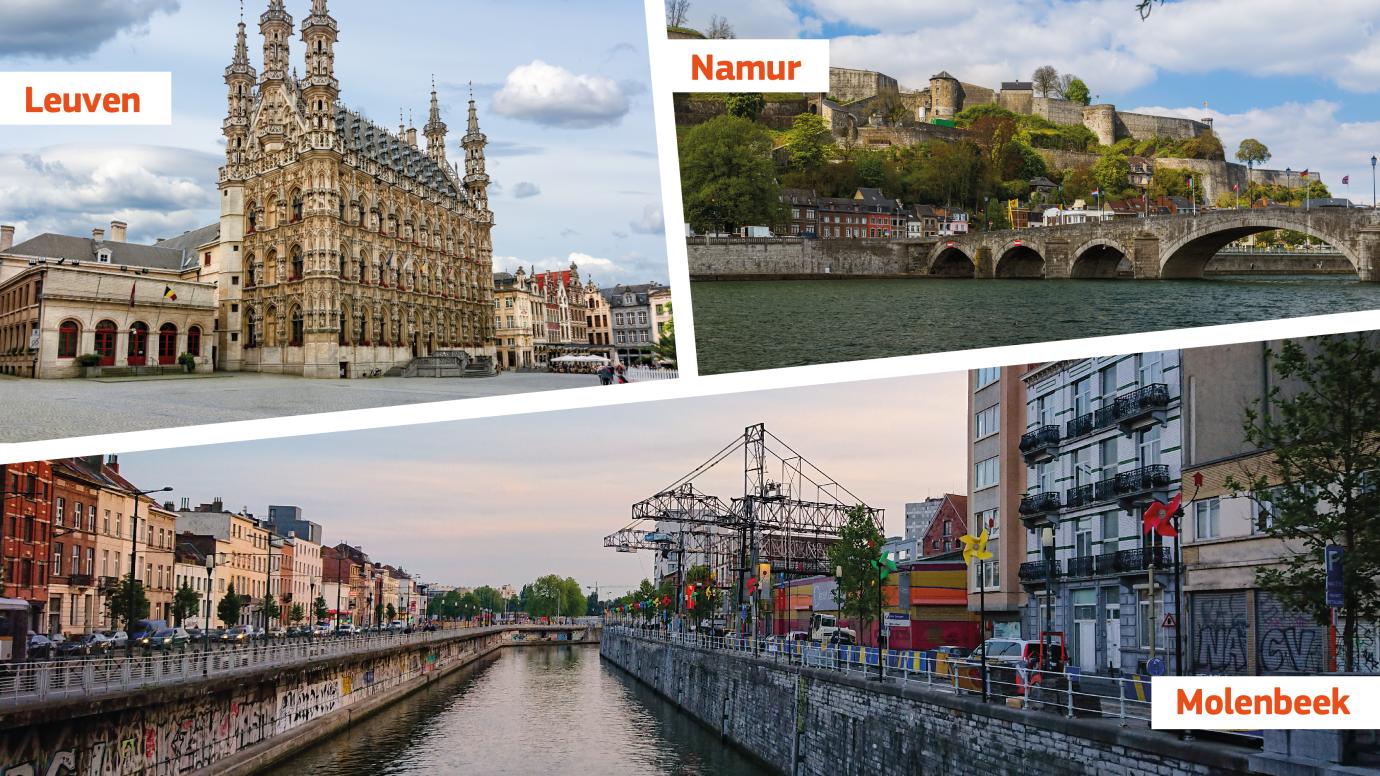The European Capital of Culture initiative, launched in 1985, is one of the European Union's longest-standing cultural programs. It aims to highlight the diversity of European culture, stimulate growth and tourism, and foster a sense of shared identity across the continent.
The designation of European Capital of Culture has proven to be a powerful catalyst for cultural, economic, and social revitalization. In many cases, these improvements have had lasting benefits, creating a foundation for future cultural and economic activities. The three cities (Leuven, Molenbeek and Namur) have announced optimistic forecasts about the initiative.
Molenbeek falls into the 19th district of the Brussels wider region, and its proposal was created in the wake of the 2016 Brussels terrorist attacks. The application has been supported by the city of Brussels, and Catherine Moureaux, Mayor of Molenbeek, boasts optimism about the potential of the candidacy to promote and develop the cultural landscape of the city district. She notes, "together, we can ensure that Molenbeek continues to rise as a lighthouse of culture, diversity, and creativity – not just for Brussels, but for Europe and all the Molenbeeks our continent harbors/is home to," eluding to underlooked cities and districts around Europe.
Namur follows a similar line, with its application website stating its reasons for its bid, staging that ‘It’s an opportunity to revitalise the area, unite Namur’s players around a common project, establish Namur’s role as the political capital of Wallonia and, more generally, re-enchant people with their city and their roots’
The state of Leuven draws from its cultural past and future forecasts. It’s website cites centuries old architecture and its plans for future artistic developments of the city as reasons for its shortlisting, praising the ECOC for inciting positive and lasting impacts on other capitals of culture.
However, Critics argue that the event often prioritises tourism-driven projects over community-centred ones and can drive up property prices, displacing local residents.
The example of Mons, cultural capital 2015, is one that drives scepticism towards the initiative, citing poor organisation, including a hazardous installation that had to be dismantled after 5 weeks, and shallow developments of the city structure.
While city developments are often welcomed by locals, these changes also come amidst discussions about wider gentrification in Belgian cities. This concern is written into the official guide for candidates as it states that ‘the main focus of an ECOC programme is on the citizens, in particular those of the city, and their connection with culture and Europe.’. Local ground level organisers of the festival are therefore advised to act responsibly safeguarding local communities.
Belgium’s history of Cultural Capitals
The ECOC is selected due to many factors including assessing its possibility for long-term cultural impact rather than operating as a pop-up intervention. Belgium’s previous portfolio includes Antwerp in 1993, Brussels in 2000, Bruges in 2002, and Mons in 2015.
Each of these cities reaped both immediate and lasting benefits, while also sparking important discussions about the impact of cultural investment on urban development and local communities.
Antwerp 1993:
Antwerp was the first Belgian city to hold the title in 1993. Already known as a hub for art and fashion, the city used the opportunity to boost its international profile.The cultural capital initiative is said to have galvanised areas of the city, especially in relation to the Docklands that transformed from a ‘no go’ area to one of the most fashionable districts in town.
Brussels 2000:
In 2000, Brussels—often known more for its role as the EU’s administrative heart than for its cultural scene—took the spotlight. Brussels embraced its role as a crossroads of cultures, showcasing not only its historical architecture and artistic heritage but also highlighting its multicultural communities.
Bruges 2002:
In 2002, Bruges leveraged its mediaeval charm to host its year as European Capital of Culture. Known for its canals, cobblestone streets, and historic architecture, Bruges blended its picturesque setting with modern art installations, contemporary dance, and avant-garde theatre. Bruges proposed itself for European Capital of culture 2030, but was not shortlisted for its second round.
Mons 2015:
Mons, a smaller post-industrial city in Wallonia, took on the title in 2015. This designation was part of a larger strategy to rejuvenate the city, which had faced economic hardship following industrial decline.
For Belgium’s next European Capital of Culture, the opportunity presents a chance to learn from past successes and address the challenges to create a lasting, inclusive impact.
Photo credit: © European Union








